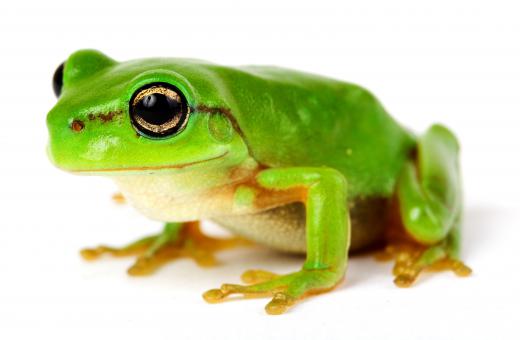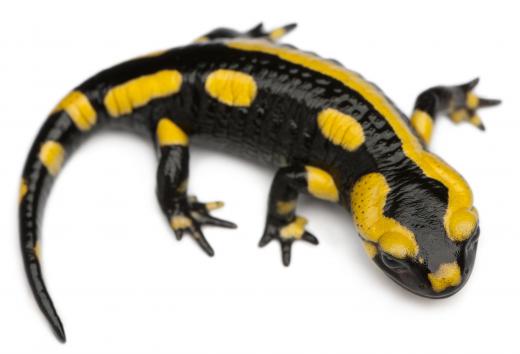What are the Major Groups of Amphibian?
 Michael Anissimov
Michael Anissimov
Amphibians, class Amphibia, are an ancient lineage that evolved directly from lobe-finned fish in the late Devonian period, about 365 million years ago. At one point it contained three subclasses: labyrinthodonts, lepospondyls, and lissamphibians. Today, only lissamphibians still exist, counting all surviving amphibians among its members: newts and salamanders (an order called Caudata or Urodela), frogs and toads (order Anura), and the rarely-seen limbless caecilians (order Gymnophiona or Apoda).
Among the surviving groups of amphibian, the most successful are the frogs and toads (5,453 species), followed by salamanders and newts (560 species), and caecilians (171 species). It is thought that all these amphibians share a common ancestor, though some workers argue that salamanders and newts descended from a different ancient ancestor than the rest. The number of amphibian species is roughly comparable to the number of mammal species — both have about 6,000 — but obviously mammals are much more numerous and successful.

The common ancestor of lissamphibia probably lived about 290 million years ago. One fossil from that time, Gerobatrachus, is referred to as a frogamander because of its clear combination of frog and salamander-like traits. Called a "stubby-tailed salamander with froglike ears," the rediscovery of this fossil in 2004 showed that the common ancestor of frogs and salamanders lived more recently than was otherwise thought. The common ancestor of caecilians and the other amphibians may have been 10-20 million years older. The discovery of Gerobatrachus proved that modern amphibians descended from an ancient group called temnospondyls. Controversy about amphibian descent had been considered one of the most significant in vertebrate evolution prior to the discovery of the frogamander fossil.

Although ancient amphibians were relatively large, occupying many of the niches taken by reptiles and mammals today, today's reptiles are relatively small. One species reminiscent of this long-lost amphibian past is the Chinese Giant Salamander (Andrias davidianus), a river-dweller that reaches sizes of 64 kg (140 lb) and 1.83 m (6 ft). Like many other amphibians, the Chinese Giant Salamander is critically endangered, today only living in the most remote mountain streams. Other species of amphibian that are currently under danger of extinction are the Malagasy rainbow frog, Chile Darwin's frog, ghost frogs, the Seychelles frog, the Sagalla caecilian, Mexican Lungless salamanders, and the Betic Midwife Toad.
AS FEATURED ON:
AS FEATURED ON:













Discuss this Article
Post your comments